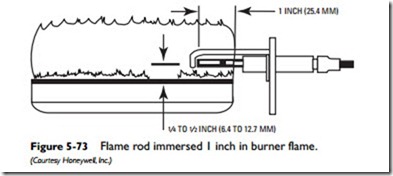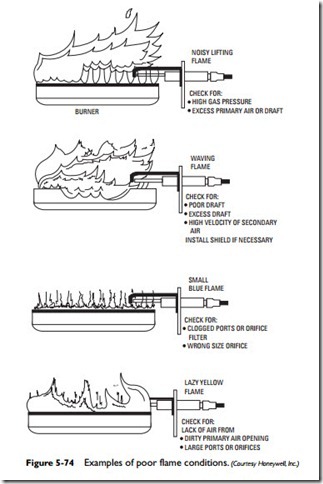Flame Sensors
In electronic ignition systems, a flame sensor is used in conjunction with the igniter to control the burner flame. The ignition module provides AC power to the flame sensor, which the burner flame rectifies (changes) to direct current (DC). The level of flame current is measured by the flame sensor to ensure flame presence. The flame current must be the specified minimum for the ignition module. For example, the flame current for a Honeywell S87C direct-spark
ignition module must be at least 1.5 µA, whereas for a Honeywell S89 hot-surface ignition module it must be at least 0.8 µA.
Note
In electronics, rectification is the process of converting alternating current (AC) to direct current (DC). Flame rectification indicates that a flame (e.g., a gas burner flame) is used to convert from AC to DC current.


